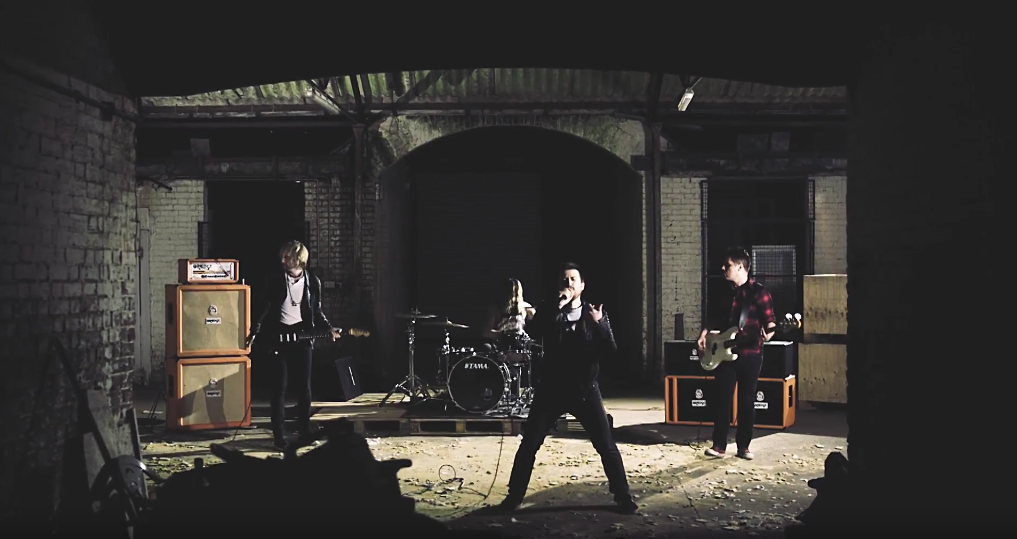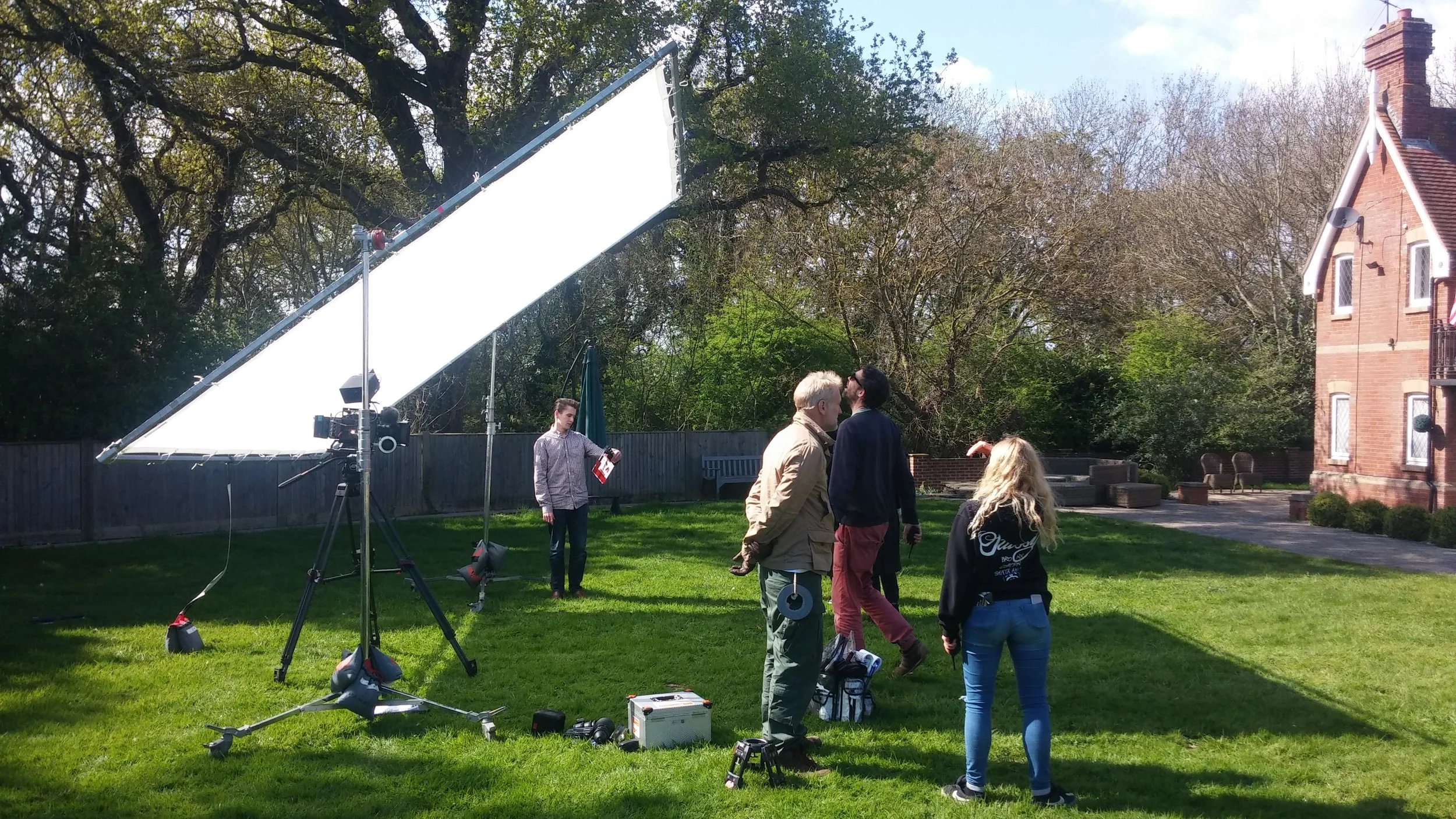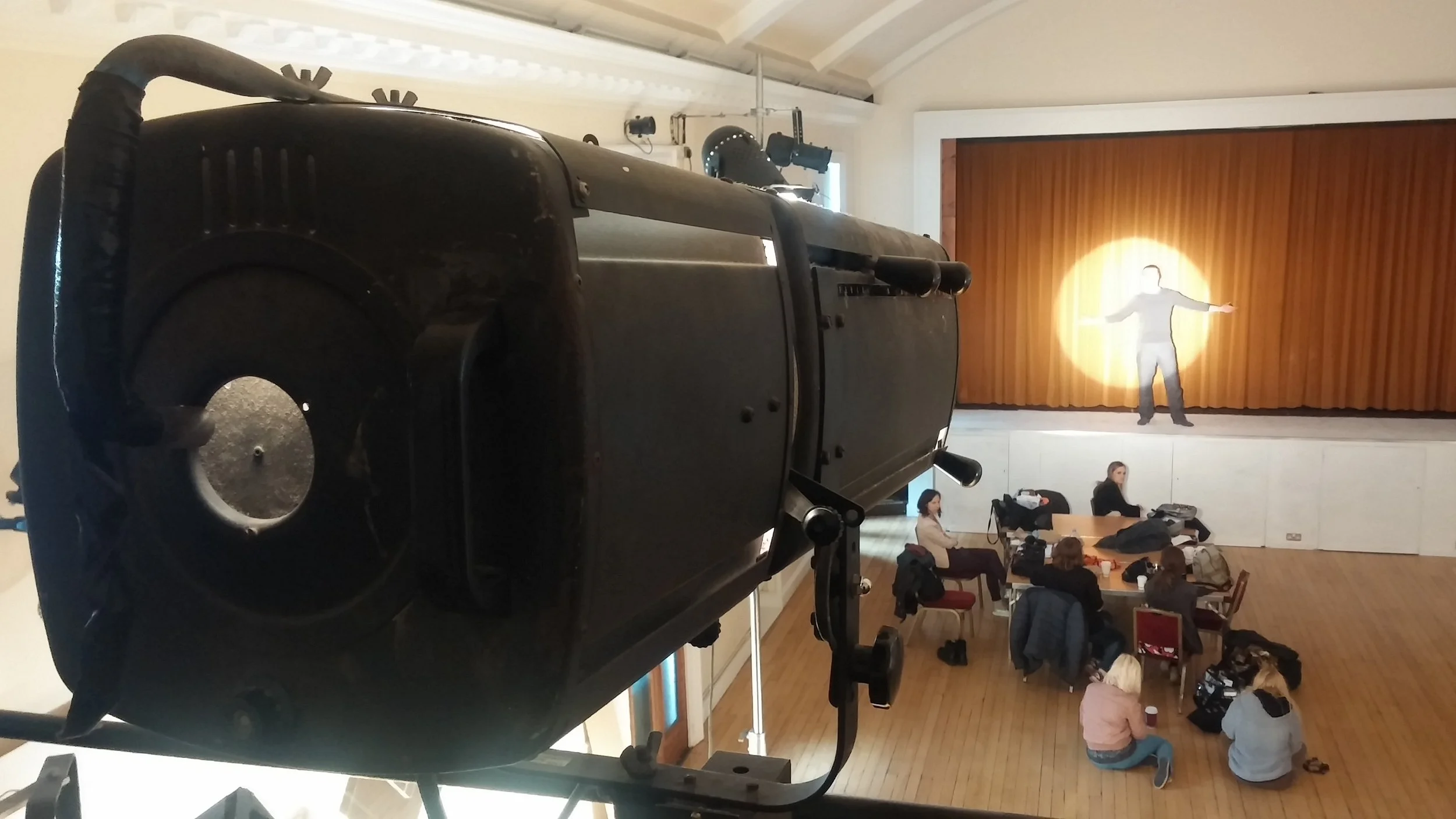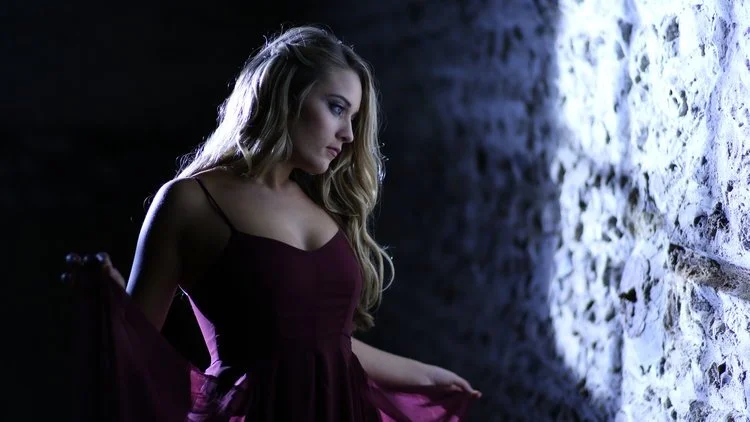Hard light VS soft light (and why we need both)
Understanding how to use both hard and soft light is essential to raising your production values
When you’re starting out in video production and are introducing some lighting into your productions it can often be difficult to know where to begin. Well, one good place to start is to get to grips with a basic concept; understanding the difference between hard and soft light. But more importantly, understanding what you can do with both types of sources and why you might choose one over the other (or use both) will help you to raise the production value of your shoots substantially.
Shining an 800W 'redhead' fresnel without any diffusion to create a strong, well defined shadow (I used to be a hand model, you know). To make the shadow even more prominent I would need to increase the distance between my hand and the light.
Hard light
Hard light sources come in a number of forms. The sun on a clear day, fresnel or open face fixtures and even ordinary household light bulbs give out hard light. These sources are often strong and will give you a high contrast look with harder shadows, providing the source is smaller relative to the subject i.e. further away.
For this music video with 325productionsUK a 2.5K HMI gelled to tungsten was used behind the band to provide a powerful key light. Without any diffusion and positioning the band away from the light the result was long, well defined shadows which - along with the location - perfectly suited the tone for a hard, heavy rock track.
Up close on the singer and you can see the HMI's beam (along with some careful flagging) has helped to create lovely contrast. Shooting partially into the light has created flare, but for our purposes this actually worked for us.
“It is much easier to soften a hard light than it is to harden a soft light”
My 800W redhead is now shining through a sheet of heavy diffusion. Whilst the shadow is still quite prominent, it is far softer than before. If I wanted to soften it further I could either move my hand closer to the light or move the diffusion closer to my hand, therefore making the source larger in comparison to my hand.
Soft light
Soft lights also come in a number of forms. They can be purpose built soft light fixtures such as Kino Flos (fluorescents) or they can be modified hard lights such as 2K "blondes" with soft boxes. Soft light is not as harsh as hard light; it offers lower contrast which means less prominent shadows. As a result, soft light can be a lot more flattering on many subjects.
The amount of softness varies depending on the fixture, the distance the subject is from the source and the choice of modifier (if softening a hard source) but the golden rule is:
The larger the relative size of the light source to the subject, the softer the light.
2 fluorescent bulbs with soft boxes on either side of our subject complemented by a kicker on the background has resulted in a very evenly lit image here.
Shining an 800W redhead through a diffuser on the left and filling the right side with some bounce has created a soft, flattering image. By deliberately under lighting the background by a small amount our subject truly stands out.
“One downside of soft fixtures is that they risk flooding a scene with too much light, taking away all of the contrast. One way to make these sources more directional and reduce spill is to attach a grid or egg crate”
On set with Substantial Films; on this bright day a huge trace frame (or silk) was used to soften the harshness of the sun. Because our shot involved two actors we needed to diffuse a large area.
So, which is better?
Well, that's not a very good or fair question to be honest because each source has a purpose. It entirely depends on what you are shooting, what equipment or natural light you have available and, most importantly, your preferred taste. What might pose a better question is 'when might I decide to use each source?' Here are some examples.
Hard light in context:
On set for 325productionsUK using an HMI to act as the sun for an interior scene.
Strong Sunlight
When there are no clouds in the sky, the sun - being small relative to us on earth - is acting as one powerful hard light source and it can be quite intense, producing long shadows. This is great if you want a punchy look or you're in the desert, but it's not always the most flattering look for close ups.
If you are shooting an interior and want to replicate direct, hard sunlight (to fill a room for instance) then you can either rely on the sun itself (riskier option, especially in the UK!) or you can use artificial light to replicate the sun, such as using an HMI to shine through a window. For realistic sun rises and sun sets the hard light source would be much lower to the ground in relation to the subject and as a result would create even longer shadows.
This shot from the film Twenty Twenty Four shows nothing but hard light. Both the character's torch and the light hidden behind him further down the tunnel are hard sources, resulting in a punchy and dramatic image. What's more, the fact that the light down the tunnel is further away from the subject has made it smaller in relation to him so the shadows are even harder. Soft light just wouldn't have cut it here. To see the trailer click here.
Low key drama
If you're production is moody or dramatic you may opt to use multiple hard light sources to create deliberately strong shadows. Film noir is an excellent example of a genre that uses this heavily. Remember though, it's not just the most powerful lights than can be classed as 'hard'; there are in fact many smaller fixtures such as the Arri 300W which output hard light and have their own particular uses.
A softer light source might be more flattering but it would fall off much quicker.
Spotlight
Think about when you've been to the theatre or watched films such as The Great Escape. Any sort of spot light used here is going to be a hard source as it gives out a lot of light and can be focused into a small area from far away. Achieving this with a soft light just wouldn't be possible, because the light would fall off too quickly.
A more subtle spotlight, and actually a lot more commonly used in video, is the use of backlights or hair lights for interviews or studio setups. Hard lights can punch through from further away and providing you don't over expose, will enable your subject to stand out from the background. This stops an image from being completely flat.
“Soft lighting doesn’t always have to be even across the image. By allowing it to wrap around the subject in order to create a soft shadow, it can make it look more three dimensional”
Soft light in context:
From the short film 'Punchbag' (23 and a half films) we filmed an exterior where an overcast December morning actually worked in our favour, although bounce was still used underneath our subject for very subtle fill.
Overcast day
Shooting anything outdoors on an overcast day is effectively like shooting under a giant softbox. The sun is a hard source but the clouds are naturally diffusing the light and flattering our subjects for us. We like overcast days when we're filming!
In the short comedy 'Toast' a sense of realism was needed, hence the low contrast approach.
High key drama
Any production opting for a sense of realism (think soap operas) is likely to use a lot of soft light. This keeps the contrast generally low and spreads the light throughout a shot or scene. Dramatic shadows, whilst stylistic, don't always look realistic.
Multiple soft light sources were used in this web commercial
Studio lighting
Think Saturday night TV or chat shows. Rarely will you see a strong shadow or a dramatic highlight. Presenters are usually lit with nice even soft lighting.
This interview for Mollart Engineering Ltd. was lit by a Dedolight DLH4 150W with a softbox to left of camera and the interior lights (fluoresescents) left on. A small amount of magenta was added in post production to remove the green tint emitted from the interior lights.
Corporate video
For the majority of business videos the message is usually a positive and forward thinking one. To support this, too much contrast can have a negative impact and therefore soft, even lighting is usually the way to go for interviews.
“Even with the softest light source, you can’t completely remove shadows. What you can do is control the intensity of these shadows, change their direction or hide them amongst the mise en scene”
Mixing hard & soft light:
Depending on what you're shooting you may want to combine hard and soft light. In fact, to create dynamic and cinematic images (that's what we all want to achieve, right?) doing just this can be an excellent approach to lighting. More often than not, in my opinion this is what classes an image as 'cinematic'.
Referring again to this shot from the Nazi Vengeance music promo lit by DOP Haydn West, Substantial Films. With an HMI shining in through the barn window the hard light hits the back of our subject to create a highlight. The power of the source also means it bounces back off the wall to fill her face (now soft). The result - a dynamic image that uses both hard and soft light to great effect. True cinematography.
Another example of combining hard and soft light to create a dynamic image but with a little less contrast. The left side of our talent's face is lit by a spotted 300W Arri fresnel with a flag partially in front of it to avoid spill and concentrate the beam. The right side of her face is lit by an 800W Arri fresnel but through a Chimera softbox. This gives the impression that the sun is shining in through a window and that the overall tone isn't too dramatic. To see the full commercial click here.
“We’re gonna need a bigger boat!” (or in this case a van). Higher production values = increased weight and bulk”
Conclusion: Hard VS soft light - we need both.
Whenever somebody asks me the question 'which lights should I buy?' it's always difficult to answer because it entirely depends on what they need them for. You see, the truth is for cinematography most of the time we're trying to get soft light, but that doesn't mean we should discount hard sources. If anything, I would say hard light sources are much more useful because you can do so much more with them! If you need to light big or small spaces on location, hard sources will give you much more flexibility. However, if you're setting up a small studio to shoot talking heads then you may only need soft fixtures. The point is, it's entirely situation dependent. Just like cameras, there is no one light fit for every job.
Remember, you can soften a hard source easily but the alternative is much more difficult and this is why I believe hard lights are generally more useful tools for DOPs. Moving a soft source further away from the subject will harden the light but you risk not having enough light to actually illuminate your subject if you do so. If you need to light a large space for a wide shot and only have a couple of small studio fluorescents, well, you're going to struggle. On the contrary, if you soften a hard light source, whether that be shining through a trace frame, a soft box or by bouncing the light you are going to reduce its output whichever method you use, so the bigger the source the better.
At the end of the day I believe it comes down to this. You either need 'one trick pony', practical (not to be confused with practicals i.e. lights that the art department uses to dress a scene) soft fixtures or you need more flexible and useful hard fixtures with added weight, bulk (and often time) to achieve this usability. The choice is yours.
Of course, if like me you film for a living then sooner or later you'll justify investing in both!

















